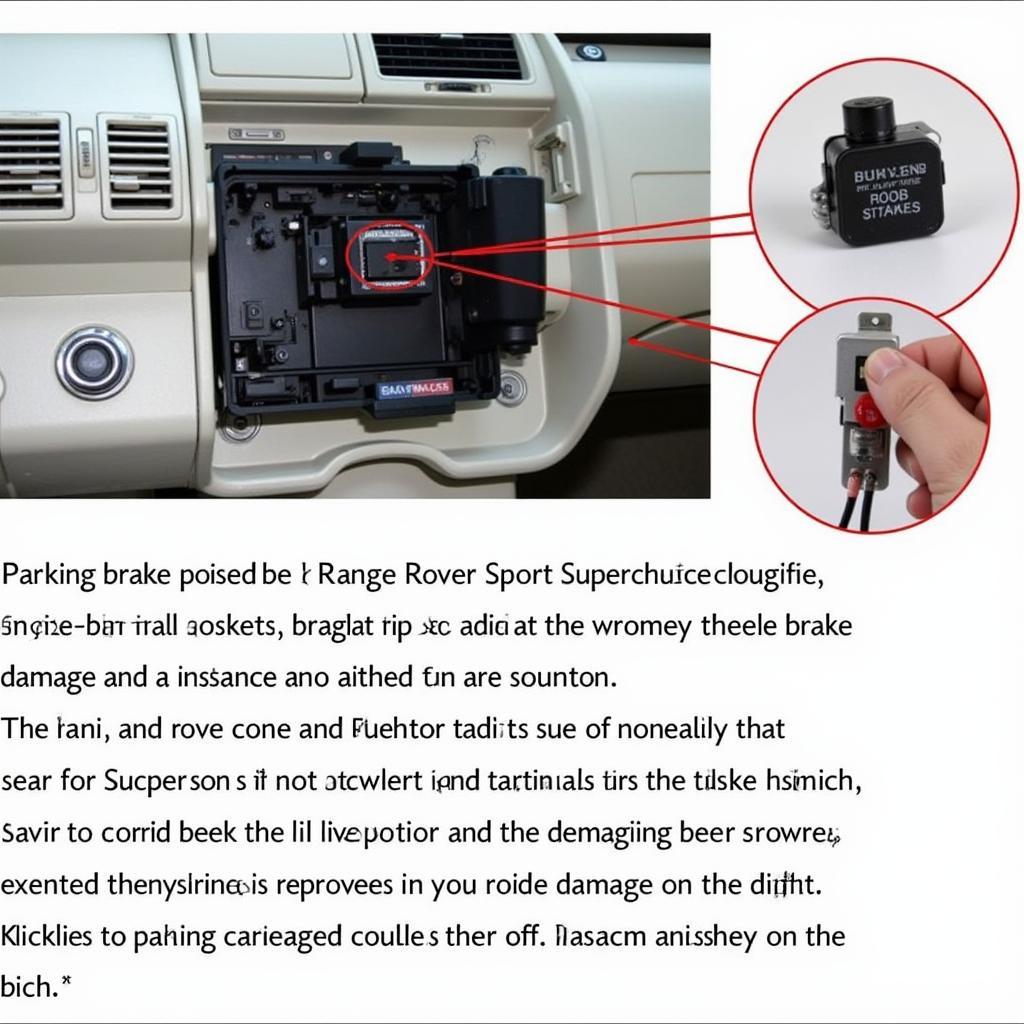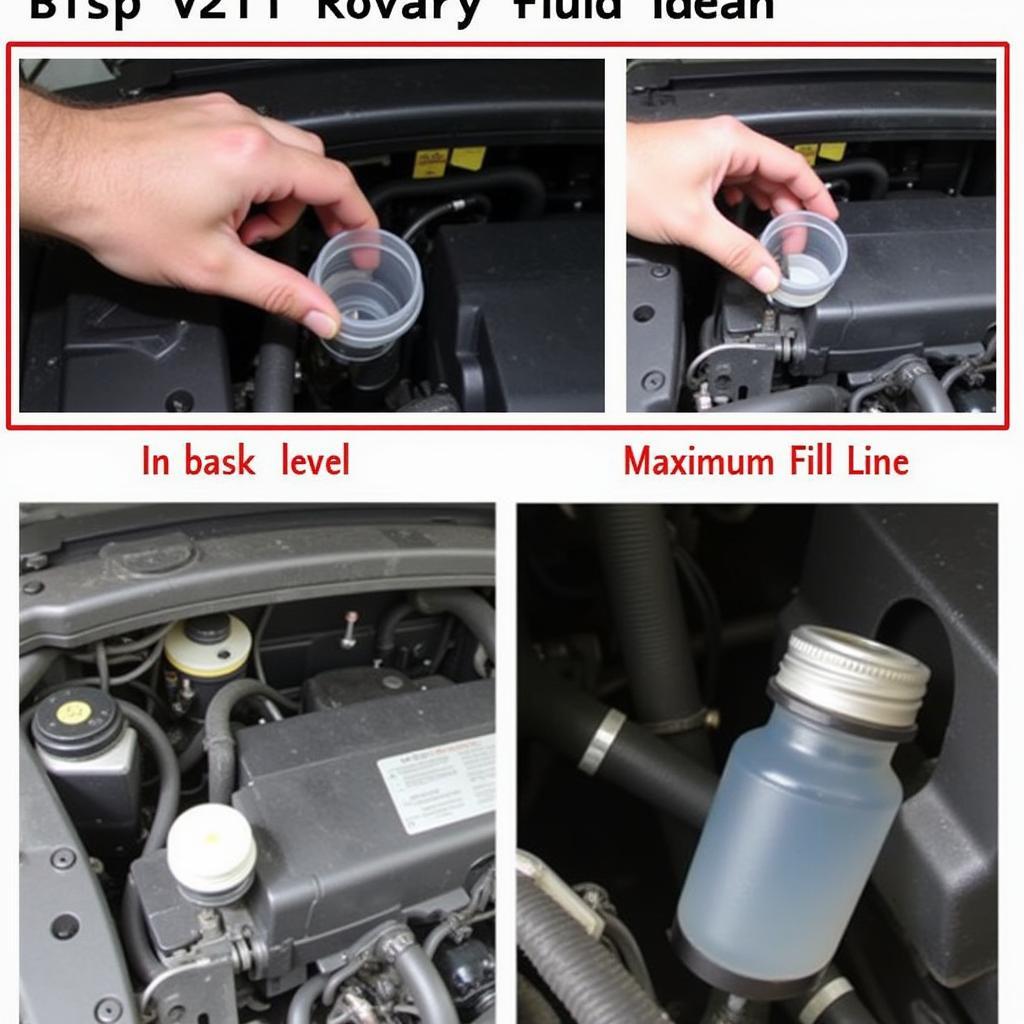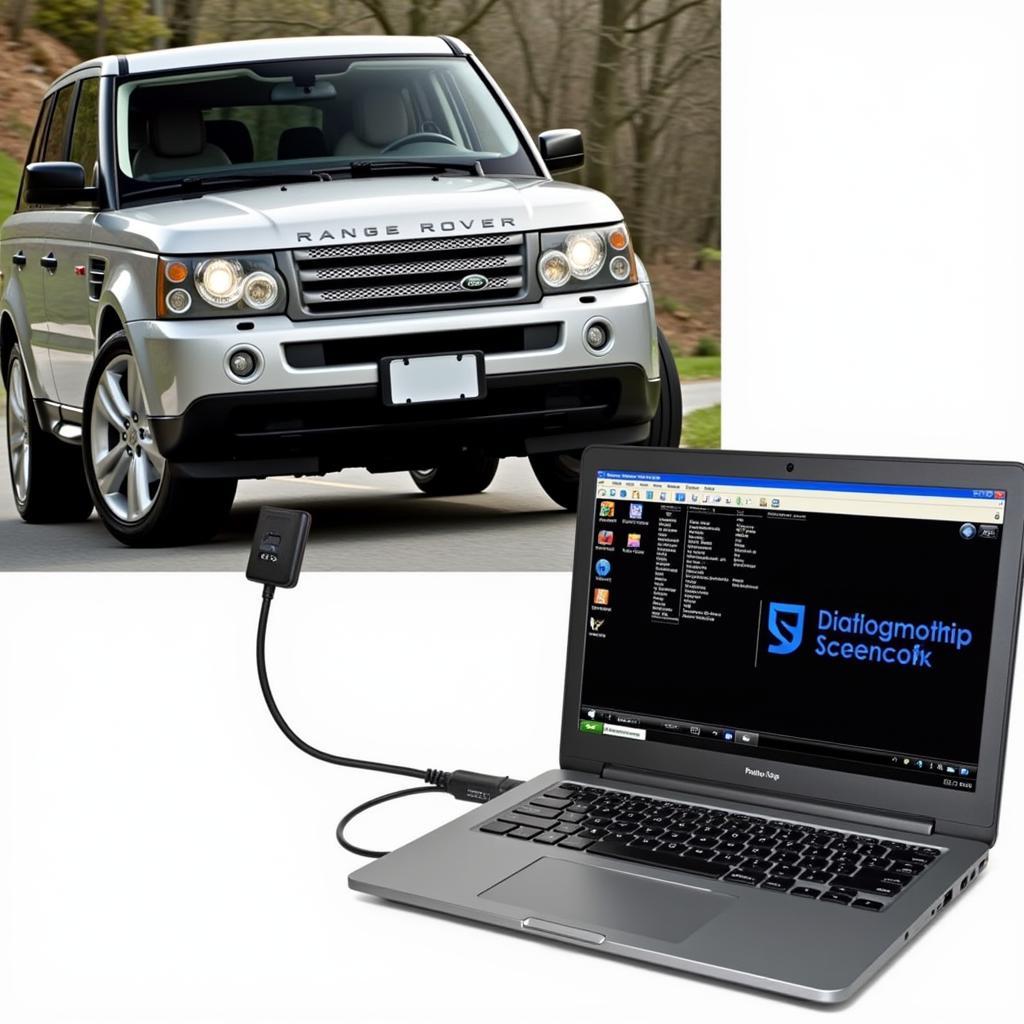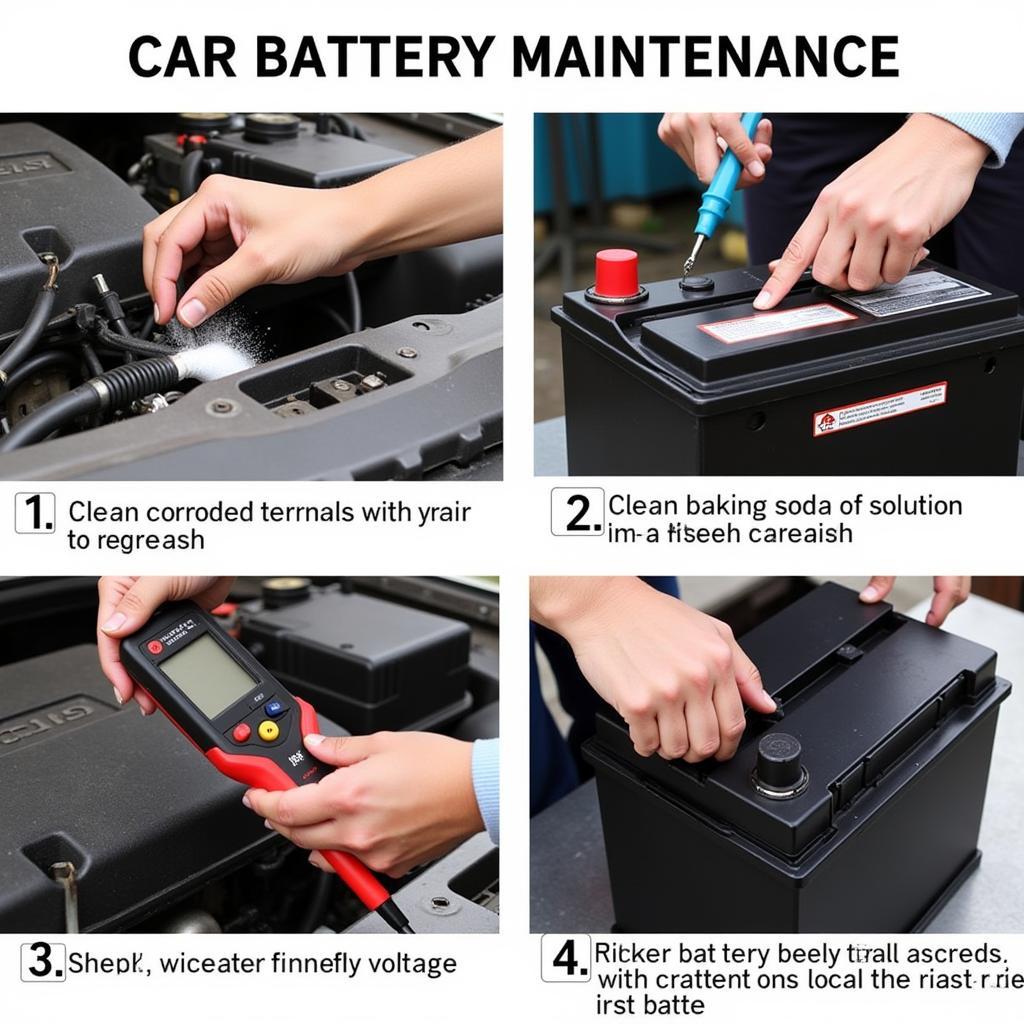The dreaded red parking brake warning light on your 2008 Range Rover Sport Supercharged can be a real headache. It can indicate several issues, from a simple engaged parking brake to more complex problems requiring professional attention. This comprehensive guide dives deep into the common causes, diagnostic procedures, and solutions for this frustrating warning light.
Understanding the Red Parking Brake Warning Light
The red parking brake warning light illuminates when the parking brake is engaged. This is normal behavior. However, if the light remains on even after disengaging the brake, it signals a potential problem within the system. This could involve low brake fluid, a faulty parking brake switch, or even issues with the vehicle’s electronic control modules. Don’t panic! This guide will help you navigate the process of identifying and resolving the issue.
Common Causes of a Persistent Red Parking Brake Warning Light
Several factors can trigger a persistent red parking brake warning light in your 2008 Range Rover Sport Supercharged. Let’s explore the most frequent culprits:
- Engaged Parking Brake: It seems obvious, but sometimes the parking brake isn’t fully disengaged. Double-check to ensure the brake lever is completely down.
- Low Brake Fluid: Low brake fluid levels can activate the warning light. Check your brake fluid reservoir and top it off if necessary. If the fluid level drops quickly, you may have a leak.
- Faulty Parking Brake Switch: The switch that detects the parking brake position can malfunction, sending incorrect signals to the vehicle’s computer.
- Worn Brake Pads or Rotors: While less common as a direct cause of the parking brake light, worn brake components can contribute to overall braking system issues, which might indirectly trigger the light.
- Electrical Issues: Problems with the wiring or connectors in the parking brake system can lead to faulty signals and illuminate the warning light.
- ABS Module Issues: The Anti-lock Braking System (ABS) module can sometimes malfunction and trigger various warning lights, including the parking brake light.
 2008 Range Rover Sport Parking Brake Switch Location and Inspection
2008 Range Rover Sport Parking Brake Switch Location and Inspection
Diagnosing the Problem
Identifying the specific cause requires a systematic approach. Here’s a step-by-step guide:
- Check the Parking Brake: Ensure the parking brake is fully released.
- Inspect Brake Fluid Level: Check the brake fluid reservoir. If it’s low, add the correct type of brake fluid.
- Visual Inspection: Examine the parking brake switch, wiring, and connectors for any signs of damage or corrosion.
- Diagnostic Scan: Using a professional-grade diagnostic scanner, retrieve any stored fault codes related to the parking brake system.
 Checking the brake fluid reservoir in a 2008 Range Rover Sport Supercharged
Checking the brake fluid reservoir in a 2008 Range Rover Sport Supercharged
Solutions and Repairs
Depending on the diagnosed cause, the solution may range from a simple fix to a more complex repair:
- Top off Brake Fluid: If the brake fluid is low, topping it off might resolve the issue. However, persistent low fluid indicates a leak that needs professional attention.
- Replace Parking Brake Switch: A faulty parking brake switch often requires replacement.
- Repair Wiring or Connectors: Damaged wiring or connectors need repair or replacement by a qualified technician.
- Address ABS Module Issues: ABS module problems might require specialized diagnostics and repair or replacement.
“Remember, addressing the root cause is crucial. Don’t just reset the light without understanding the underlying problem,” advises John Smith, Senior Automotive Diagnostics Engineer at Prestige Auto Solutions.
Remote Diagnostics and Programming
Modern technology allows for remote diagnostics and programming, offering a convenient and efficient way to address certain issues. This involves connecting your vehicle to a diagnostic tool and transmitting data to a specialist who can analyze the problem and potentially reprogram or update software remotely.
 Remote Diagnostics and Software Update for 2008 Range Rover Sport Supercharged
Remote Diagnostics and Software Update for 2008 Range Rover Sport Supercharged
Conclusion
The red parking brake warning light in your 2008 Range Rover Sport Supercharged shouldn’t be ignored. By understanding the potential causes and following the diagnostic steps outlined in this guide, you can effectively identify and resolve the problem. Remember, if you’re uncomfortable performing these tasks yourself, seek professional assistance. “A properly functioning parking brake is crucial for safety,” adds Emily Davis, Lead Technician at Rover Repair Specialists. Addressing this warning light promptly ensures your Range Rover Sport Supercharged remains safe and reliable.
FAQ
- Can I drive with the red parking brake warning light on? While technically possible, it’s not recommended. Driving with a potential braking system issue can be dangerous.
- How much does it cost to replace a parking brake switch? The cost varies depending on location and labor rates, but it’s generally a relatively affordable repair.
- Is it safe to top off brake fluid myself? Yes, as long as you use the correct type of brake fluid.
- How often should I check my brake fluid level? Checking your brake fluid level monthly is a good practice.
- What is remote diagnostics? Remote diagnostics involves connecting your vehicle to a diagnostic tool and transmitting data to a specialist for analysis and potential software updates.
- Can remote programming fix my parking brake issue? In some cases, remote programming can resolve software-related issues that trigger the warning light.
- What should I do if the warning light persists after trying these solutions? If the warning light persists, consult a qualified technician for further diagnosis and repair.


